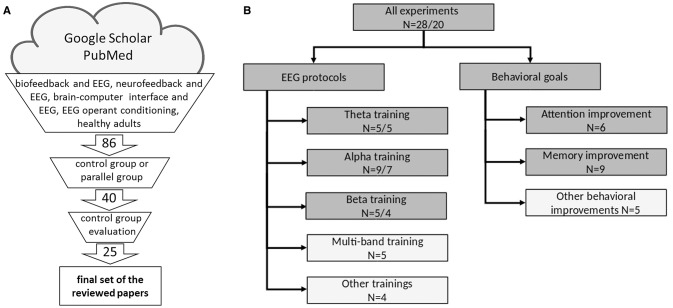Figure 1.
(A) Schematic representation for article selection. (B) Schematic representation of the experiments used in the review. Dark gray boxes specify the experimental paradigms grouped for analytical studies according to EEG (left branch) or behavioral protocol (right), light gray boxes specify groups not included in the analyses. In the EEG protocols branch, N denotes the number of experiments included in each EEG and behavioral group (EEG/behavioral) where EEG effects (changes of the EEG spectrum) were analyzed. In the Behavioral goals branch N denotes the number of experiments in each behavioral or cognitive group. The 28 EEG-NFB experiments were used for analyses. Of these studies, smaller groups were defined according to their specific EEG training protocols or the expected behavioral/cognitive effects. The groups are not mutually exclusive; both types of data were often analyzed in the same study, which resulted in multiple classifications. Some experiments also investigated more than one behavioral goal (Table 4). Protocols that could not be attributed to any of the specific subgroups (lowermost boxes “Other”) contributed only to the general analysis.

